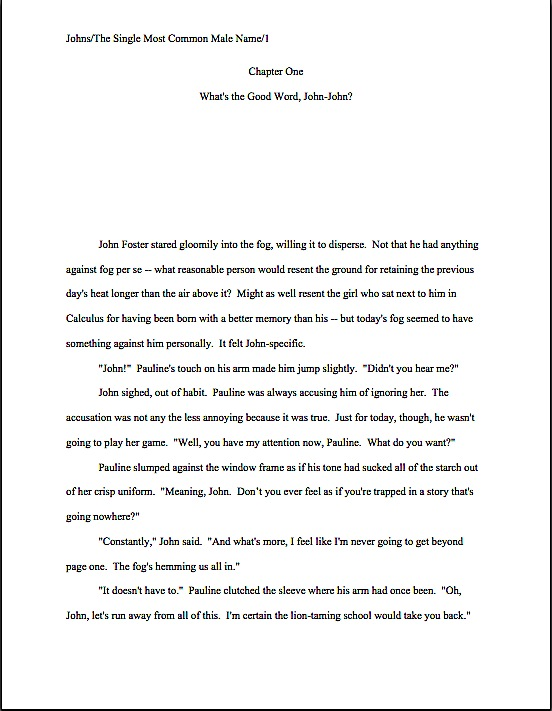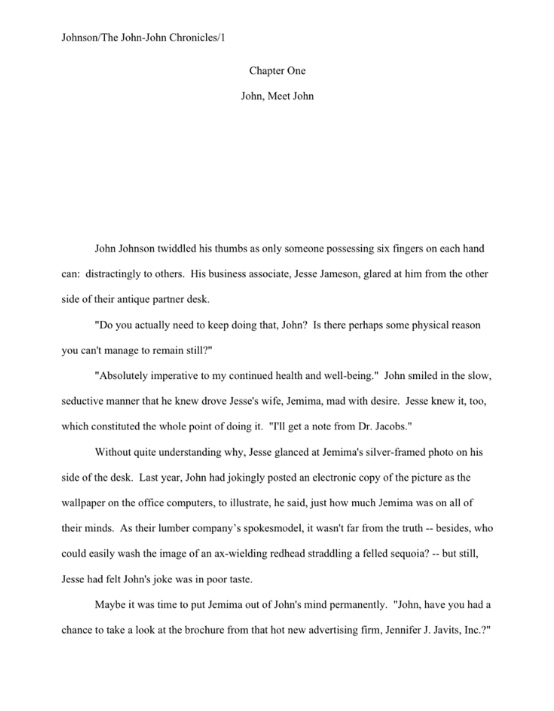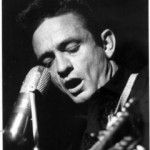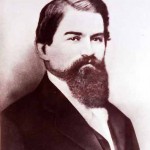Before I launch into today’s magnum opus, allow me to present you with a challenge: what do all of the men above have in common? Other than being, you know, men?
While you are pondering the possibilities, this seems like a good time to mention that beginning next week, I shall begin my much-anticipated Pitchingpalooza series. Because getting through that before my local pitch-centric writers’ conference will require daily posting — in the finest ‘palooza tradition — I will be warming up by tackling a few more pet peeves over the weekend. That will give you time, if you are so inclined, to leave any pitch-related questions, concerns, or special requests in the comments section of this post. The more I know about what you hope and fear in a verbal pitch, the better I can gear Pitchingpalooza to be truly helpful.
Back to today’s business. Have you given up on the brain-teaser above?
Here’s a hint: these are pictures (from left to right and top to bottom) of Man in Black Johnny Cash, John Bunyan (author of a book those of you who grew up loving LITTLE WOMEN may know indirectly, PILGRIM’S PROGRESS), a post-Beatle John Lennon, President John Quincy Adams (in a beefcake portrait, obviously painted prior to his mutton-chops phase), the Great Profile himself, John Barrymore, and John Smythe Pemberton, the inventor of Coca-Cola. Sensing a pattern here?
I should hope so, now that you’ve been sharpening your eye throughout this series on spotting Millicent the agency screener’s pet peeves. But are you as talented at spotting the problem in its native environment?

How did you do? Award yourself a gold star if you spotted all 9 iterations of John in the body of the text — and another if you caught it in the header. (No, that wouldn’t count as repetition in the text, now that you mention it, but to a redundancy-weary Millicent at the end of a long day of screening manuscript submissions, it might contribute subconsciously to her sense of being bombarded by Johns. She’s only human, you know.)
But let me ask you: did the 5 Paulines bug you at all? Or did they simply fade into the woodwork, because your brain automatically accepted them as necessary to the text?
If you’re like 99.99% of the reading public, the repetition of Pauline’s name probably didn’t strike you as at all unusual, but to that other .01% — a demographic that includes practically everyone who has ever read for a living, including agents, editors, and contest judges — it might well have been distracting. Amongst Millicents, submissions (and first drafts in general) are positively notorious for this type of redundancy.
As is so often the case with Millie’s pet peeves, name repetition drives her nuts precisely because it so common — and it’s so common because most aspiring writers don’t notice it in their own work at all. You’d be astonished at just how often a given character’s name will pop up within a single page of text in the average manuscript submission. Like the bugbear of our last few posts, the ubiquitous and, major characters’ names seem to become practically invisible to self-editing writers.
While I’m on the subject of ways to drive Millicent to madness without even trying, let’s talk about a pet peeve shared by practically all of us who read for a living, at least in the U.S.: the radical overuse of the character name John.
Although John is only the second most popular male name in the United States (James has been #1 for a while now), writers can’t get enough of our pal John. Next to him, poor old Jim, as well as lonely old Robert (#3), bereft Michael (#4), and left-at-loose-ends William (#5) lead lives undocumented by the creative pen. As a group, we also have a practically unbounded affection for Jon and Jack. And don’t even get me started on how many Johnnies there are running around YA landscapes, taunting our heroines with their bad-boy ways.
On some days, Millicent’s desk so overfloweth with J-men that he can seem to be stalking her from manuscript to manuscript. “Leave me alone!” she moans, and who can blame her? “And bring me a character named Leopold!”
Of course, even as unusual a name choice as Leopold could become annoying if it appears too often on a single page — but let’s face it, Leo is infinitely less likely to have been popping out at Millie all day as John. L is also not nearly as often the first letter of a proper noun as J, and thus less susceptible to confusing a skimming eye.
Oh, you weren’t aware that many a reader-in-haste would read no farther into a proper noun than its first letter? That fact alone should lead those of you fond of John, John, and Jack to avoid christening any of your other characters Jim, Jason, or Jeremy. For abundant proof why, stand up now, take a few steps back from your computer, and try reading the following as fast as you can:
John jerked Jeremy’s arm sharply. Jostled, Jeremy joked, “Jason, are you going to let John jumble our chess pieces?”
“Jeez, Jason,” John jeered. “You can’t take jesting anywhere near as well as Jared, Jimmy, or Jamal.”
Jared jutted his head from behind the jerry-rigged doorjamb. “Did you call me, John?”
“Just joshing, Jared.” John just missed Jeremy’s playful shove, sending him sprawling into Jason. “Jeremy here can’t take a joke.”
Actually, it’s not a bad idea to avoid giving any other character a name that begins with the same first letter as your protagonist’s. If John had been the only J rambling across the passage above, his too-common moniker might still have irritated Millicent a trifle, but it certainly would have been easier for her to keep track of who was doing what when. Take a gander:
John jerked Harry’s arm sharply. Jostled, Harry joked, “Arnold, are you going to let John jumble our chess pieces?”
“Jeez, Harry,” John jeered. “You can’t take jesting anywhere near as well as Bertrand, Georgie, or Douglas.”
Bertrand jutted his head from behind the jerry-rigged doorjamb. “Did you call me, John?”
“Just joshing, Bertie.” John just missed Harry’s playful shove, sending him sprawling into Arnold. “Harry here can’t take a joke.”
Better already, isn’t it? Still, that’s a lot of capital Hs, Js, and Bs on the page.
News flash: proper nouns are as susceptible to over-use in writing as any other kind of words. Although aspiring writers’ eyes often glide over character and place names during revision, thinking of them as special cases, there is no such thing as a word exempt from being counted as repetitive if it pops up too often on the page.
In fact, proper noun repetition is actually more likely to annoy your garden-variety Millicent than repetition of other nouns. Why? Repetition across submission, of course, as well as within them. Too-frequent reminders of who the characters are and the space on the map they happen to occupy makes the average editor rend her garments and the middle-of-the-road agent moan.
If it’s any consolation, they’ve been rending and moaning for years; proper nouns have been asserting and re-asserting themselves on the manuscript page for a couple of decades now. Pros used to attribute this problem to the itsy-bitsy computer screens that writers were working upon back in the 80s– remember the early Macs, with those postcard-sized screens? They weren’t even tall enough to give a life-sized reflection of an adult face. If the user made the text large enough to read, the screen would only hold a dozen or so lines.
But as technology has progressed, the screens on even inexpensive computers have gotten rather large, haven’t they? Even on a laptop, you can usually have a view of half a page, at least, at full size. My extra-spiffy editor’s monitor can display two full-sized manuscript pages side by side. I could serve a Thanksgiving dinner for eight upon it, if I so chose.
I doubt I shall so choose. But it’s nice to have the option, I suppose.
“So why,” Millicent demands, shuddering at the sight of her co-workers’ disheveled wardrobes, “given how much easier it is to see words on a screen than in days of yore, do submitting writers so seldom have a clear idea of how distracting name repetition can be on a printed page? Is it merely that writers christen their major characters with their favorite names — like, say, the dreaded John — and want to see them in print again and again?”
A good guess, Millie, but I don’t think that’s the primary reason. Partially, it has to do with how differently the eye reads text on a backlit screen: it definitely encourages skimming, if not great big leaps down the page. So does re-reading the same scene for the 157th time. But mostly, I believe it has to do with how infrequently writers read their own work in hard copy.
Hear that Gregorian-like chanting floating through the ether? That’s every writer for whom I’ve ever edited so much as a paragraph automatically murmuring, “Before submission, I must read my manuscript IN ITS ENTIRETY, IN HARD COPY, and OUT LOUD. Particularly the opening pages, because if Millicent has a problem with those, she’s not going to read beyond them.”
I MAY have mentioned this two or three thousand times before. I repeat this advice so often that writers who read this blog religiously have been heard to mutter this inspiring little rule of thumb unconsciously in their sleep, under their breath during important meetings, just after saying, “I do,” to their no doubt adorable spouses, on their deathbeds…
So yes, I admit it: I’m a broken record on this subject. But for some very, very good reasons, I assure you.
To name but the two most relevant for our purposes today: first, reading in hard copy makes patterns in the text far more apparent to the reading eye than scanning text on a computer screen. Hard copy is also how most editors, a hefty proportion of agents, and practically every contest judge currently deciding between finalists will be seeing your submissions.
Yes, even in this advanced electronic age. Many agencies still don’t accept e-mailed submissions; neither do most editors at publishing houses. (Some do, of course, so it’s worth your while to download your manuscript to an electronic reader — my agent uses a Kindle — to see how your pages look on it.) The major literary contests for aspiring writers have been quite slow to switch over to purely electronic entries, probably because regular mail submissions are very handy for sending the admission fee.
But enough theory. Let’s apply some of this to a practical example. As always, if you’re having trouble reading individual words, try holding down the COMMAND key and pressing + to enlarge the image.

See how your eye tries to leap from one J to the next? Sing along with me now, campers: the skimming eye is automatically attracted to capital letters in a text.
That’s why, in case you were wondering, not-especially-literate people tend to Capitalize Words for Emphasis. (When they’re not placing words that no one has ever said aloud inside quotation marks to indicate that those words are somehow “special” — another widespread professional readers’ pet peeve.) It’s almost always grammatically incorrect, but it definitely does the job of eliciting attention.
That’s not always a good thing, as far as Millicent is concerned. I can show you why in 14 words.
The West Wind whipped through the screen door as if it were not there.
Clearly, the writer intends the reader to respond to this statement with a comment like, “My, but that’s a forceful wind.” An ordinarily critical reader might ask, “Um, isn’t the whole point of a screen door that it allows air to travel through it unobstructed?” Every Millicent currently treading the earth’s surface, however, would produce precisely the same response.
“Why,” they will demand, “is west windcapitalized? Is it someone’s name?”
The practice is, in short, distracting. As a general rule of thumb, anything that causes Millicent to wonder why the writer chose to include it — rather than, say, why the protagonist did or what’s going to happen next — is worth removing from a submission.
That doesn’t mean, of course, that it’s in your best interest to avoid capitalized words altogether. Due to proper nouns’ completely legitimate use of capitals, they jump off the page at the reader — which can be a good thing, if a manuscript is crammed to the gills with action, unnamed characters, and other literary titivations that do not involve the major characters. The reader’s eye will be drawn to the major players when they show up. Problem solved, right?
Not in most manuscripts, no. Since most novels and pretty much all memoirs deal with their respective protagonists on virtually every page, it isn’t precisely necessary to keep calling attention to the protagonist by referring to him by name. Constantly.
Or is it, John? John? Are you listening, John?
Frequent repetition of the protagonist’s name is seldom necessary, especially in scenes where only he appears — and it can become downright irritating over the course the dialogue of a two-character scene. Unless the one of the characters happens to have multiple personalities, it’s generally assumed that the names of the conversants will not alter substantially within the course of a few pages of dialogue.
“So why,” Millicent wants to know, “do so many writers keep labeling the participants every few lines, even in scenes where there’s little probability of confusing the reader by reverting entirely to pronouns?”
An excellent question, Millie. That’s why professional editors so often excise tag lines (he said, she said), rather than having the narrative identify every speaker ever time s/he opens his or her pretty mouth: with only two possible speakers and alternating dialogue, any reasonably intelligent reader may safely be relied upon to follow which lines of dialogue are being spoken by which character. And, let’s face it, this:
John peered through the grimy window. “Is that you, Arlene?”
“Who else would it be?” She pushed the door open with her hip. “Mind helping me with these grocery bags?”
“Oh, of course.”
“Thanks.” As soon as she dropped her burden on the counter, she tossed her car keys in his general direction. “There are twelve more in the trunk.”
moves a heck of a lot faster on the page than this:
“Is that you, Arlene?” John asked, peering through the grimy window.
“Who else would it be?” Arlene asked rhetorically, pushing the door open with her hip. “Mind helping me with these grocery bags?” Arlene added.
“Oh, of course,” John replied.
“Thanks,” Arlene said. As soon as she dropped her burden on the counter, Arlene tossed her car keys in his general direction. “There are twelve more in the trunk,” Arlene said.
Rather pedantic by comparison, no? In published writing, it’s actually considered a trifle insulting to the reader’s intelligence to keep reminding her that the guy who was speaking two lines ago is speaking again now.
What was his name again? Could it possibly have been John?
That reasonably intelligent reader we were discussing a while ago is also more than capable of remembering what both of those people are called by their kith and kin, once the narrative has established proper names. But you’d never know that by the number of times some manuscripts have their discussants call one another by name — and how often the narrative refers to them by name.
John doesn’t think it’s in John’s best interest to do that. John would like to believe that Millicent would remember who he is for more than a sentence or paragraph at a time, even if the narrative did not keep barking his name like a trained seal: “John! John! John!”
In many manuscripts, simply reducing the number of tag lines in a dialogue scene will cut out a startlingly high percentage of the name repetition. In dialogue where the use of tag lines has not been minimized, proper names can pop up so frequently that it’s like a drumbeat in the reader’s ear. Let’s take a gander at a slightly less obvious example.
“I don’t think that’s fair of you, Susan,” Louisa snapped.
“Why ever not?” Sue asked.
“Oh, don’t be disingenuous with me, Sue. I’ve known you too long.”
Susan played with a nearby paperweight. Was she testing its weight for throwing? “Honestly, Lou, I haven’t the slightest idea what you’re talking about. Unless this is about John?”
“Of course it’s about John,” Louisa huffed. “How many husbands do you think I have?”
“Just one,” Susan said, smiling. “It’s been just John since the seventh grade.”
Louisa’s eyes stung for a moment. Susan always had known how to push her buttons. “Don’t change the subject, Susan. Next, you’ll be reminiscing about that time we hacked our classmate Elaine to death with sharpened rulers when we were in the fourth grade.”
Susan sighed. “Those were the days, eh, Lou?”
“I’ll say,” Louisa said, edging out of paperweight-tossing range. “She should have known better than to beat you at tetherball.”
Yes, speakers in the real world do call one another by name this much sometimes, but — feel free to sing along; you know the words by now — like so much of real-life dialogue, that level of repetition would be snore-inducing, if not downright hypnotic, on the page. Especially when name-bearing tag lines are featured in the text, even dialogue between just a couple of characters can convey the sense of a very crowded room.
And that’s more than a little puzzling to professional readers. “Why,” Millicent wonders, hastily taking a sip of her too-hot latte, “would a writer go to such lengths to label people the reader already knows?”
Even when both characters share the same sex, and thus the same personal pronoun, constant name repetition is rarely necessary for maintaining clarity. Yet over-labeling is so common that after reading a few hundred — or a few thousand — manuscripts, Millicent would have to be pretty darned unobservant not to have begun to suspect that many writers simply harbor a prejudice against the innocent-but-effectual pronouns he and she.
Seriously, a lot of submitters seem to go out of their way to eschew pronouns, even in narrative paragraphs. To take not an unusually proper noun-ridden example:
Eve slapped her laptop shut with a bang and glanced around, annoyed, for her waitress. Naturally, Tanya was nowhere in sight. Eve ostentatiously drained her drink to its dregs, but when Tanya did not come running, Eve filched a straw from the table next to her. The guy tapping away on his laptop never even noticed. Eve made slurping sounds on the bottom of her glass with it.
Still no sign of Tanya. For good measure, Eve upended the glass, scattering swiftly melting ice cubes messily all over the starched white tablecloth, and began banging the now-empty vessel upon the now-sodden linen. “Service!” Eve bellowed. “Tanya!”
Quietly, Tanya retrieved Eve’s glass from Eve’s waving hand. “Don’t you think you’ve had enough?”
Eve looked up at Tanya with that my-daddy-is-someone-important air that always worked with bank tellers, hot dog vendors, and waitresses who lived primarily upon their tips. “I’ve been drinking Perrier all night. As you would know if you had been paying attention, Tanya. May I have another?”
Come on, admit it — that was kind of annoying to read, wasn’t it? Until you’ve seen this phenomenon in action, it seems a trifle counter-intuitive that reusing a single word within two consecutive lines might be irritating to a reader, but as we’ve just observed, it can be, even if the word in question is not a proper noun. The capitalization of a name makes it stand out more, however.
Of course, if for some reason the writer of that last piece of sterling prose wanted for some reason best known to himself to render it infinitely more annoying to Millicent, we already know how he might manage that, don’t we? All he needs to do is rechristen Eve and Tanya with names beginning with the same capital letter.
Eve slapped her laptop shut with a bang and glanced around, annoyed, for her waitress. Naturally, Edna was nowhere in sight. Eve ostentatiously drained her drink to its dregs, but when Edna did not come running, Eve filched a straw from the table next to her. The guy tapping away on his laptop never even noticed. Eve made slurping sounds on the bottom of her glass with it.
Still no sign of Edna. For good measure, Eve upended the glass, scattering swiftly melting ice cubes messily all over the starched white tablecloth, and began banging the now-empty vessel upon the now-sodden linen. “Service!” Eve bellowed. “Edna!”
Quietly, Edna retrieved Eve’s glass from Eve’s waving hand. “Don’t you think you’ve had enough?”
Eve looked up at Edna with that my-daddy-is-someone-important air that always worked with bank tellers, hot dog vendors, and waitresses who lived primarily upon their tips. “I’ve been drinking Perrier all night. As you would know if you had been paying attention, Edna. May I have another?”
Remarkable how much more difficult that was to read, isn’t it? To get an even better sense of how repetitious it would seem on a printed page, take a few steps back from your computer (if you can manage that logistically) and take a gander at the pattern all of those capital Es make in the text.
Now, admittedly, the writer of this exceptional excerpt may merely have been trying to clarify matters by repeating the names so often: there are in fact two women in this scene. If both were only called she every time, naturally, the narrative might conceivably become confusing. (If you have any doubts about how confusing a narrative can be when no proper names are used at all, get a 4-year-old to tell you the plot of a movie she’s just seen.)
However, like many proper name-heavy manuscripts, the writer here (who was me, obviously, so I guess it’s not all that productive to speculate about her motivation) has constructed the narrative to make opportunities for name repetition where it isn’t logically necessary. Here’s the same scene again, streamlined to minimize the necessity of naming the players:
She slapped her laptop shut with a bang and glanced around, annoyed, for her waitress. Naturally, Tanya nowhere in sight. Eve ostentatiously drained her drink to its dregs, but when no one came running, she filched a straw from the table next to her — the guy tapping away on his computer never even noticed — and made slurping sounds on the bottom of her glass with it.
Still no sign of life. For good measure, she upended the glass, scattering swiftly melting ice cubes messily all over the starched white tablecloth, and began banging the now-empty vessel upon the now-sodden linen. “Service!” she bellowed.
Quietly, Tanya retrieved the now-airborne glass before it could crash to the floor. “Don’t you think you’ve had enough?”
Eve looked up at her with that my-daddy-is-someone-important air that always worked with bank tellers, hot dog vendors, and waitresses. “I’ve been drinking Perrier all night, as you would have known had you been paying attention. May I have another?”
Anybody confused? I thought not. As you may see, proper nouns were not necessary very often in this passage.
Before any of you proper noun-huggers out there start grumbling about the care required to figure out when a pronoun is appropriate and when a proper noun, that was not a very time-consuming revision. All it really required to alert the reader to which she was which was a clear narrative line, a well-presented situation — and a willingness to name names when necessary.
That, and an awareness that repeating names even as far apart as three or four lines just doesn’t look good on a printed page; it’s distracting to the eye, and therefore a detriment to the reader’s enjoyment of the text. A proper noun repeated more than once per sentence — or, heaven help us — within a single line of text — is almost always a sign that sentence is in need of serious revision.
Ready to accept the general principle, but unsure how you might apply it to your manuscript? Never fear — next time, I shall run you through so many practical examples that you’ll be excising proper nouns in your sleep. You might enjoy some variation from the IN ITS ENTIRETY, IN HARD COPY, and OUT LOUD song.
Night-night, John-John, and keep up the good work!





